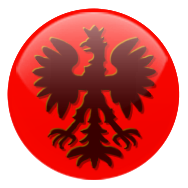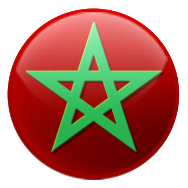[*]Brazil (It looks good, but it isn't very historical, is it?)
On Brazil's icon: it is historically accurate, even though that symbol (the cross over the armillary sphere) is originally a Portuguese symbol.
Case and point: the armillary sphere is on the contemporary Portuguese Republic flag, which in its turn is inspired in the first Brazilian flag (at the time of Pedro I, so you see, the flag is historically accurate)
And they obviously based themselves in this:
Flag of the Império do Brasil
A stylised version of the Republican Portuguese coat of arms
The thing is - even though the armillary sphere in Portugal's flag, these days, is often thought to mean something else, it is actually about Brazil. For most of its story, Brazil's flag was an armillary sphere.
This is Brazil's flag as a Portuguese colony and, later, under the United Kingdom of Portugal and Brazil as the semi-independent Kingdom of Brazil
Even these days, the Brazilian flag has a Portuguese/Brazilian armillary sphere - the blue globe in Brazil's flag is the armillary sphere. In fact, the armillary sphere was used by Portuguese sailors to find they way around the ocean (by aiming it to the stars), and Brazil's Republican flag depicts not the armillary sphere itself, but the sky it was used for. So every star in Brazil's flag represents a state, just like in the US' flag, only in Brazil's case those are real stars, as they looked from Rio de Janeiro at the time the flag was drawn.
Either way, that's the armillary sphere, which is to Portugal and Brazil what the Scandinavian cross is to Scandinavia.
As to the cross - it's the old symbol of the Portuguese empire. It is the symbol of the Portuguese Air Force, Portuguese Navy, several states in Brazil, and if I'm not mistaken the Brazilian army still uses it in some branches.
It was a major symbol of the Empire of Brazil (the continuation of Portuguese America), as Pedro I, well, was born in Portugal and ended up being the Emperor of Brazil and the King of Portugal. It was also a huge symbol of Portuguese/Brazilian expansionism into inner Brazil and Spanish America. The "bandeirantes" ("flaggers") used these flags to mark the Portuguese territory and, especially, the Paulistanos (São "Paul'ers") settlements in inner Brazil. Because of that probably, these days, it's better known for being the flag of the state of São Paulo.
TL;DR - The Brazilian flag is fully-accurate even if I think Portugal's colours take the lead here.










































 They are easily on my top three! In fact, why not make a list?
They are easily on my top three! In fact, why not make a list?


